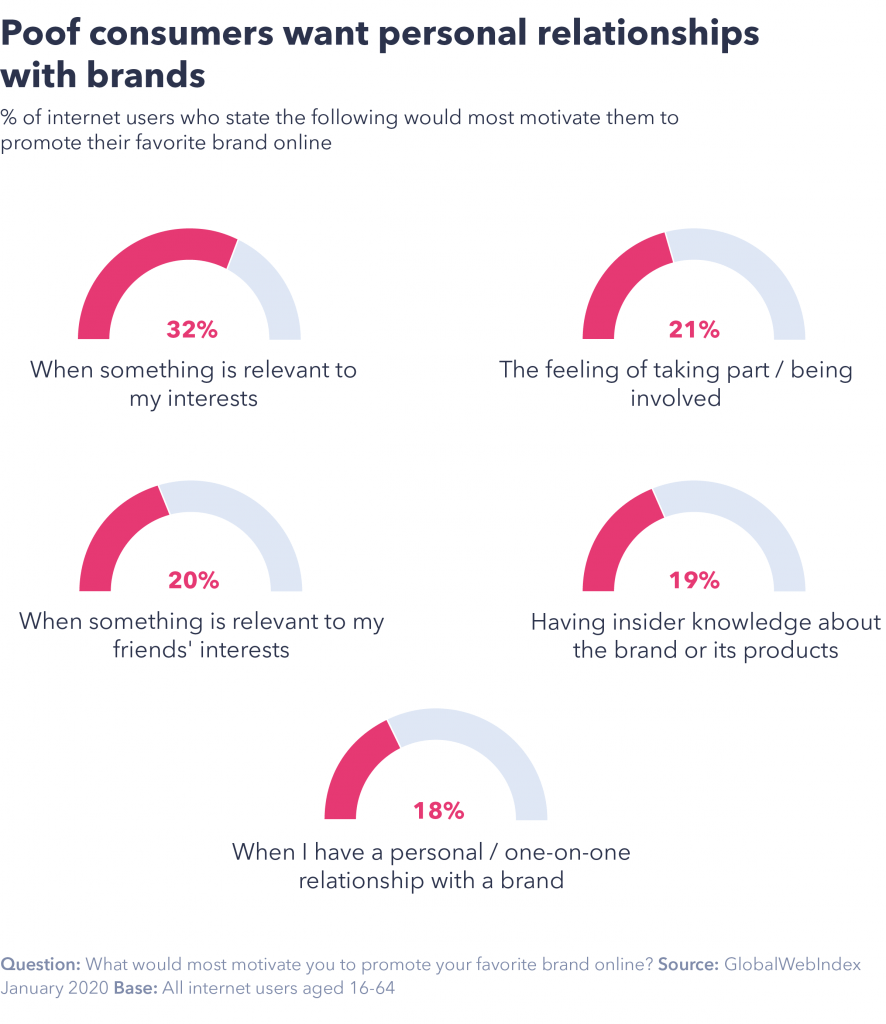If there’s one rule that proves the importance of psychographic research, it’s this:
Individuals who fall into the same demographic or behavioral group don’t always fall into the same psychographic group.
And when the aim of marketers is to fully understand who their audience is and what drives them, using demographics and behaviors alone for this paints a blurry picture.
Sharpening the focus relies on building more nuanced and detailed consumer insights into the reasons why people behave the way they do, both in relation to brands and purchasing, but also in their wider lives.
Here’s how psychographics provide marketers with the context they need to deliver brands, products and messages that really hit home.
What is psychographic research?
Also known as ‘attitudinal research’, psychographic research is the study of people’s values, desires, goals, interests, and lifestyle choices. It’s often carried out alongside demographic and other types of research to build a more complete understanding of your target audiences.
With the right psychographic questions, here’s an example of the characteristics you can gather from your audience:
Personality:
Question: How would you describe yourself?
Sample answers:
- I’m a risk-taker.
- I find that I’m easily swayed by other people’s opinions.
- I like to challenge and push myself to be the best I can be in life.
- I like to stand out in a crowd.
- I tend to make decisions quickly and based on ‘gut feeling’.
Self-perceptions:
Question: Which of the following attributes do you possess?
Sample answers:
- I’m creative.
- I’m more affluent than the average.
- I’m adventurous.
Lifestyles:
Question: Which of the following best describes your lifestyle?
Sample answers:
- I tend to buy the premium version of a product.
- I’m very career-orientated.
- I like to pursue a life of challenge.
Desires:
Question: What do you desire from life?
Sample answers:
- Money.
- Respect from my peers.
- To be knowledgeable.
Values & Opinion:
Question: What do you value most in life?
Sample answers:
- My appearance.
- To better myself.
- To better society.
- Value for money.
- Family.
This is just the tip of the iceberg.
Consumers are incredibly idiosyncratic and complex, so the need for depth and accuracy is key when it comes to your psychographic research.
But with consumer data now available that helps you pinpoint and combine these attributes, it’s easier than ever to see how these factors can feed into decisions to engage with a brand or purchase a product.
Where psychographics fit on the data spectrum
Despite what you might think, demographics and psychographics aren’t in competition. There are very clear differences between the two, but to be effective, they need to work in tandem.
Psychographics vs. demographics and behaviors
Psychographic research is rarely carried out in isolation. Instead, like with all consumer research, most brands will complement it with other first or third-party analytics (think website analytics or social listening data) to validate or take it further.
But put as simply as possible, here’s how they differ:
Demographics tell you who they are. Behaviors tell you what they do. Psychographics tell you why they do it.
The extra layer of information psychographics provide is often hailed by marketers as the most crucial insight they can get – because it can have the biggest impact on a creative idea or strategy.
Combining demographic and psychographic data, you can integrate the what with the why to build highly sophisticated profiles of your consumers; this gives you a much clearer picture of who they really are.
Quantitative vs. qualitative
The behavioral and demographic data marketers can gather first-hand from website analytics is easily quantified, but there’s a common misconception that psychographics are solely qualitative.
When psychographic data is quantified properly, it can be significantly more subjective and nuanced in comparison to traditional research.
One of the most simple, reliable and effective ways of quantifying psychographic data is to collect it using market surveys. This way you can ask thousands of consumers the same questions about themselves and you’ll have a valid set of responses from which you can draw the right insights.
Active vs. passive
Active data refers to information that’s readily and consciously provided by an individual (think surveys). Passive data is collected through online tracking technology (think analytics). Neither reveal the identity of the person in question.
Demographic and behavioral data can be collected passively, while psychographic data can only be collected actively. To get a true view though, they must be combined.
Once the active data is gathered, it can be integrated with passive data sources to reveal hidden truths about your audience.
Baking psychographic research into your strategy
Brands everywhere are being tasked with creating more “consumer-centric” models. In layman’s terms, they need to put people ahead of their products or services. Our latest research reveals one of the overarching reasons behind this shift:
Consumers want more personal relationships with brands.
Getting this right means brands need to rely on deep data into the psyche of the target market they’re trying to reach.
Here are 5 ways to achieve this:
1. Build detailed audience segments.
Segmentation is an incredibly important element of marketing and is the cornerstone of an effective strategy.
Consumer psychographics add extra dimensions to your existing knowledge of your target audience, and can even lead to a transformation of your targeting strategy.
With more complete segments, your targeting is sure to yield greater returns.
2. Construct accurate personas.
Personas bring audiences to life. And when creating a real-world representation of your audience, it pays to base it on fact.
With pain points, purchase motivators, lifestyle indicators and desires specific to each of your personas, they’ll give you what you need to build a brand and message that resonates.
3. Invest in the right channels.
You might know your consumers are active Facebook users, but you don’t know what they use it for.
Knowing why they use it will give you key insight into the kind of campaign or strategy that will actually cut through.
4. Tell emotionally compelling stories.
Consumers want a more personalized experience from brands, and a key part of this is being able to tell stories they’ll listen to.
With your knowledge into the inner-workings of specific groups, you can convert prospects into customers in a more cost-effective way.
For B2B brands looking to win new business, knowing more about your client’s audience than they do is always an attractive quality.
5. Adapt your brand and product strategy.
Psychographics should play an essential role in steering the direction of a brand in its entirety.
Knowing what your target consumers want from your brand and its products on an emotional level helps you sculpt a cohesive message and give your brand a homogenized sense of purpose.
Case Study: Bigeye
While psychographic research is centered on helping businesses understand the end consumer on an emotional level, that doesn’t mean it’s exclusively used in B2C models.
In this case study, an agency fighting to create a powerful identity in a competitive landscape is really seeing commercial results by giving psychographic research central focus.
The challenge
Standing out when new opportunities arise.
The team heading up account management and new business found smaller agencies like themselves were passed up by large clients, favoring bigger or more established competitors.
The need to forge a unique and reputable identity drove an initiative to become best-in-class experts in audience analysis; pulling data, dissecting it, and acting on it.
The action
Crafting audience personas using psychographic research.
“Our future clients have to understand why we’re spending their money on X, Y and Z; why we’re talking to these people, but not those people,” says Liliana.

The team understands data is currency – and bargaining power – which is why audience profiling has become a winning part of their pitching strategy, helping Bigeye stand out in the process.
The result
Growing the agency’s presence and reputation.
Leading with solid research first, and creative ideas second, is the approach that works for Bigeye, and the approach they’ll continue to use.
They’re keen to keep replicating this – using consumer psychographic data to reveal motivations, attitudes and perceptions – as a key selling point in convincing prospects their campaigns will work.
“The data-driven approach we’ve developed sets us up for success from the very beginning.
Not only is the quality of work improving – so is our presence, and our reputation.”
4 takeaways for brands on psychographic research
- Relying on demographic and behavioral data alone to understand your audience leaves gaps in targeting and leaks in media spend. Psychographics allow you to be more precise and build better brand experiences.
- When combined with passive data, psychographics give you the wider context around your audience needed to build an effective consumer journey.
- Survey data is the best way to gather psychographics on a large scale. It’s these large samples that give your data validity.
- Psychographics have a number of commercial benefits, including guiding media spend, creative, product development, new business pitching, and brand purpose.

